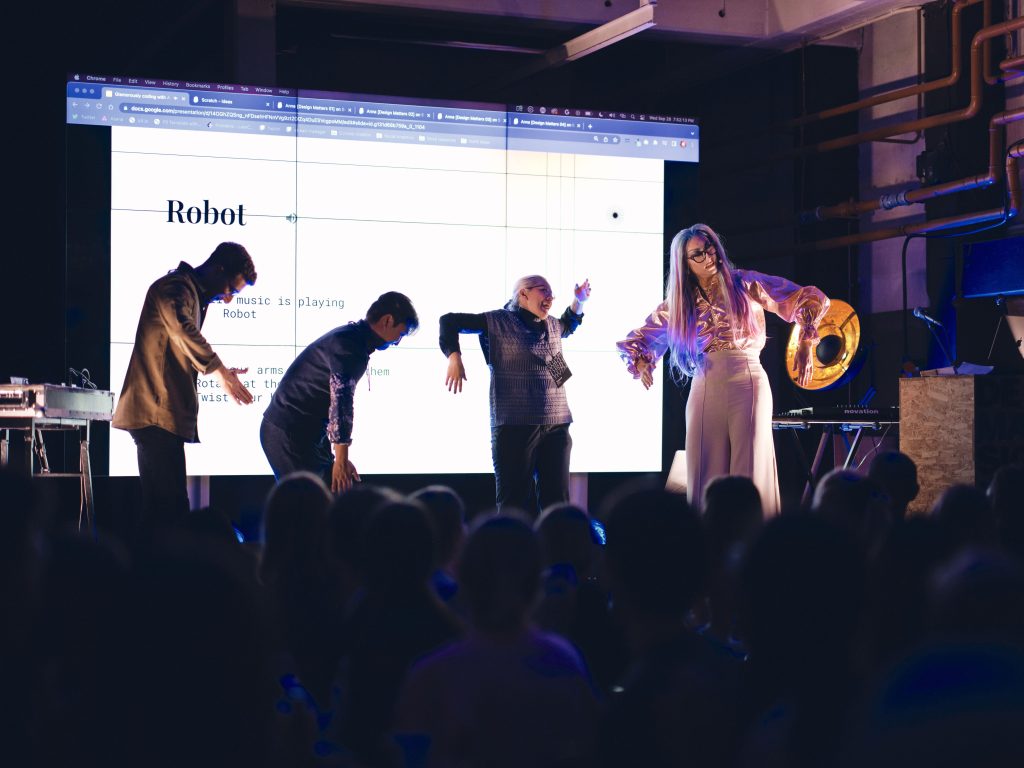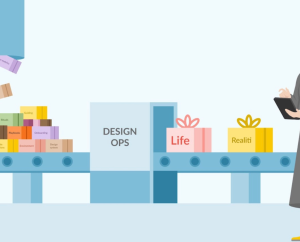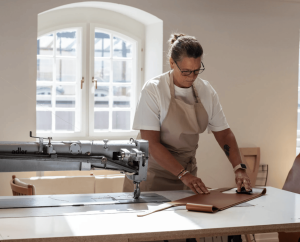Every year in January, the Design Matters team sits down with a group of international designers who gave a talk at the previous edition of Design Matters to discuss the hottest and most relevant topics in the design industry. This group of designers forms a Committee, which is the one ultimately responsible for deciding the topics of the next Design Matters conference.
This year, the Committee workshop was hosted online, so that designers located in different geographical areas and time zones could join and give their input. 15 designers – from as far East as Puerto Rico to as far West as New Zealand – participated: Geo Law, Heike Otten, Jane Vita, Jordan Craig, José Torre, Lauren Shapiro, Layshi Curbelo, Lee Timutimu, Luuk van der Meer, Ngọc Triệu, Pedro Arilla, Rahul Lindberg Sen, Regine Gilbert, and Luke Murphy.
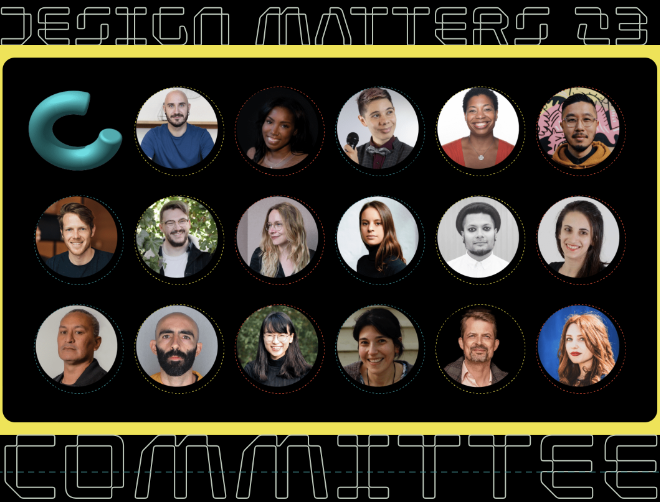
Some of the topics covered in the workshop included:
- Hot topics and trends in design 2023
- How the role of the designer is changing with emerging technologies like AI
- Societal and environmental issues we can solve through design
- How to design teams with diversity, inclusion and representation in mind
- How to harness design to support communities
- Ideas suggested by the Design Matters DM community
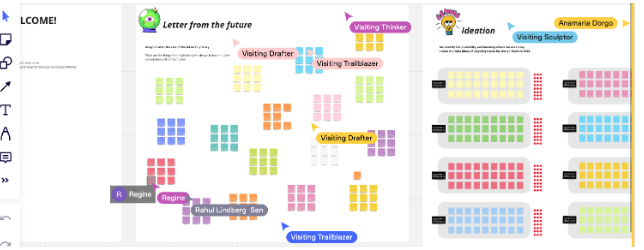
Based on the recurring and most discussed topics that emerged in the workshop, the Design Matters team put together a description of the themes, which the Committee later reviewed and provided feedback on. Find the description of each theme below.
The AI generation
Will AI replace us? Maybe. Or maybe not. But a person using AI probably will.
The role of us designers is to intentionally shape the world around us with the resources we have available. And the world we live in is increasingly shaped by data sets, algorithms, and pre-trained models. So much so that AI can even write code that actually works. We’re seeing the rise of AI tools like ChatGPT and Midjourney. At the same time, we’re seeing how AI technologies are becoming more sophisticated by the day and could be used to automate a plethora of design tasks or create more personalized design experiences. As AI & Machine Learning are entering every industry and area of life, we can no longer afford to limit the development of these systems to the domain of engineering.
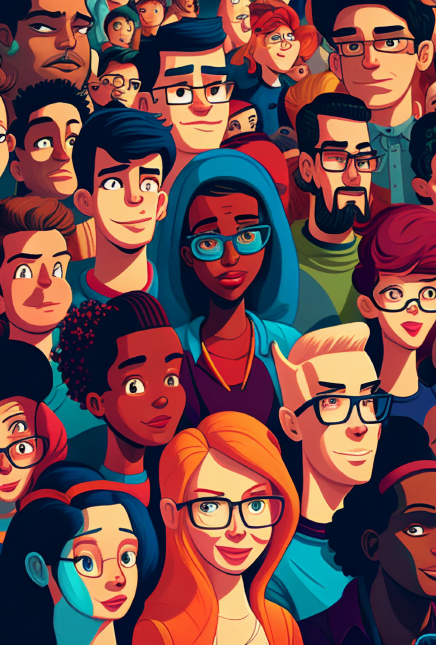
As designer and AI expert Nadia Piet wrote, there are several new practices emerging at the intersection of AI and design. For instance, we can design with AI, seeing AI as a design tool to create human-machine collaborations with creative output. We can design for AI, seeing AI as a problem solver to integrate human-centered design practices into the AI development process. And finally, we can look at the design of AI, where we see AI as a design material to explore how to shape the UX/UI and user interaction with AI systems. The experiences we design will fundamentally change. Right now, we mold our interactions around a structure UX designers set for us for AI to understand (e.g., chatbot or voice like Alexa). In the near future, experiences will be real-time, requiring us to think about the user defining the experience (see an example here).
According to neurotechnologist and CEO of Mission Control, Ramsay Brown, the intersection of AI and design is growing so rapidly that designers should prepare themselves for new roles – such as Prompt Designers, who specialize in giving AIs instructions by writing prompts – and responsibilities. Intersecting AI with design can be a lot of fun, but we must also take into consideration the ethical side of this technology that is yet to fully explore. We’re only as good as the people training the AI. For instance, a lot of AI/ML i s trained using racially biased data, generating imagery that is culturally inappropriate. In addition, we don’t know yet if we should mimic the world as it exists or create new rules and working models that challenge the systems we have in place today.
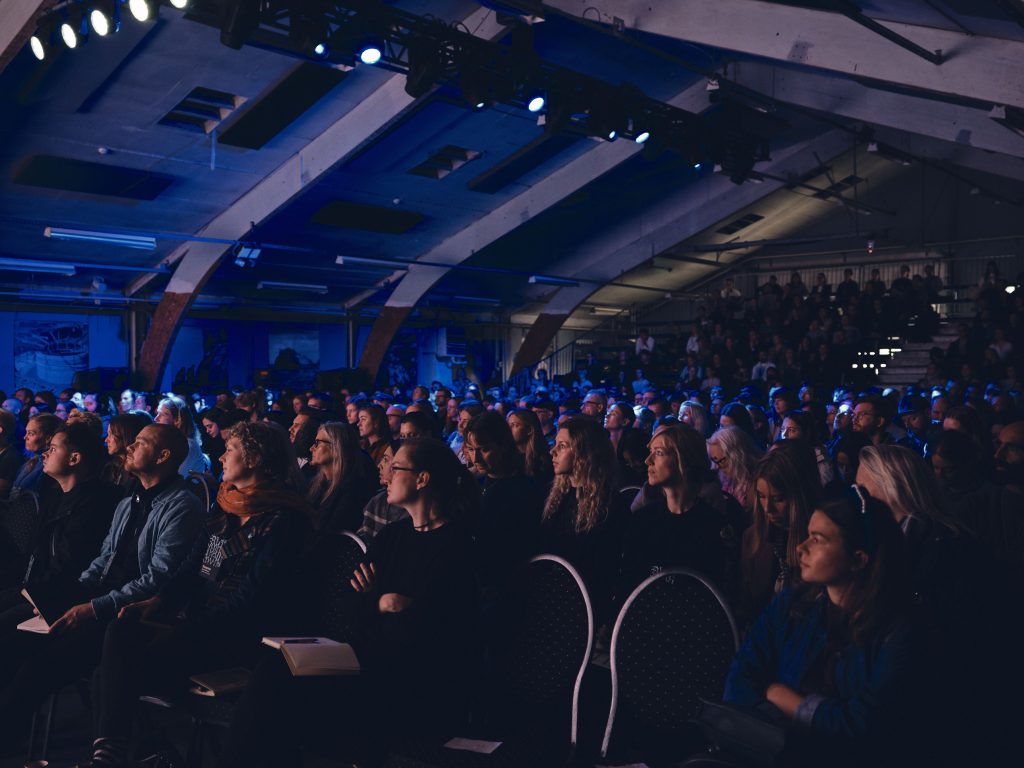
The meeting point of AI and design opens up a series of questions, such as; Why, when, and how should we build AI systems? What do designers need to learn about AI/ML? How can designers stay relevant and competitive in the changing landscape? How can we adapt and work alongside AI? What does designing actually mean in the age of AI? What will the future job of designers look like? How will users interact with the AI systems we built? Who owns and takes credit for art when it’s made with an AI, from an often pre-existing (and often biased) dataset and open-source model? Should we use computers to imitate best practices or incorporate randomness instead? Will AI become more accessible? What is deemed authentic and who decides? How do we moderate for cultural and indigenous nuance and sensitivities? This young but rapidly growing field offers exciting opportunities for designers to get involved and make an impact, which we’ll explore at Design Matters 23.
The power of unity
Diversity is the mix. Inclusion is making the mix work.
Andrés Tapia.
When we think about inclusion, we must first recognize that the world we live in is incredibly diverse and varied, and more interconnected than ever. Our planet is home to countless ecosystems, where a myriad of different creatures coexist with all their differences and fit together like a jigsaw puzzle. Humanity as a whole is part of this larger ecosystem called planet Earth.

As humans, we have the ability to shape our environment, which is what allowed us to build complex civilizations, but also what made us push the boundaries of our environment for centuries, not realizing the cost of our impact. For way too long, we have designed methodologies that are specifically geared toward humans – think of personas, user journeys, and stakeholder maps. We got so good at optimizing everything for convenience, efficiency, and even addiction, focusing on the profit of few human stakeholders, but never on planetary stakeholders. We’re also seeing the faults of Capitalism, a system whose success is defined by infinite growth – which is not feasible, as we depend on finite resources. This should prompt us to redefine our future. Individual human needs must become on the same level as planetary needs, giving voice to all the beings that can’t talk.
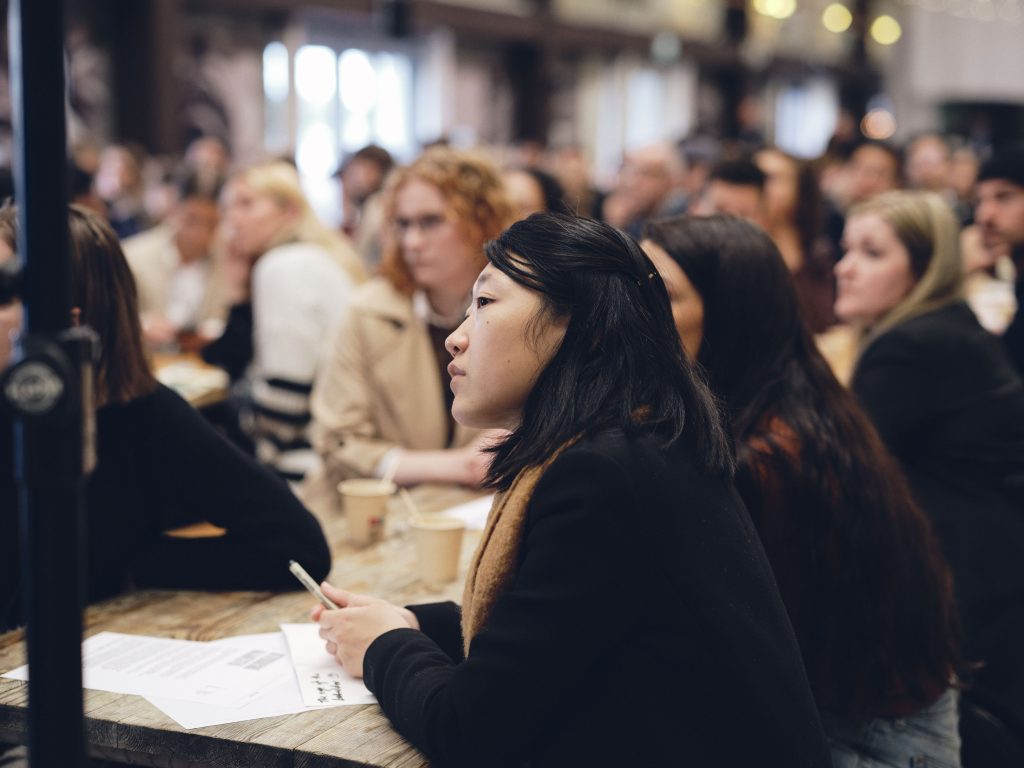
If we reduce the scope in which we look at humanity, we see that our society is an ecosystem itself. We are so diverse when it comes to our lifestyle, beliefs, culture, habits, values, health, education, physical and cognitive abilities, financial availability, and physical appearance. These differences affect our lives, our opportunities, and the way we’re perceived and treated. We must realize that unity, not uniformity, must be our aim. And we can attain unity only through variety. As Gandhi once said, our ability to reach unity in diversity will be the beauty and the test of our civilization.
So, ultimately, diversity and inclusion, which are the real grounds for creativity, must remain at the center of what we designers do. Also, so many of our ideas, frameworks, and ways of working are rooted in systemically racist, ableist, and sexist systems. At Design Matters 23 we will answer questions like; How can we challenge the systems that have led us to where we are? How do we design in ways that don’t enable and continue support for unfair systems in societies? How can we include a planet-centric approach and indigenous practices in our design practice? How can we make the voices of non-human stakeholders be heard? How can we make inclusion part of the design process and not just part of the testing phase of a product? How do we democratize digital products to guarantee wider accessibility? How do we design inclusive teams? How do we support excluded communities to get to the “starting line” where everyone else is? How do we overcome colonial constructs and systemic bias to even join the race? What kind of society will we design after Capitalism? How can we handle crises through design – e.g. housing, climate, wars, scarcity of resources?
Leading with craft
Design creates culture. Culture shapes values. Values determine the future.
Robert L. Peters
Designers hold a fundamental role in helping people navigate and interact with the world in an effective and/or entertaining way. Not only that, the work of designers can truly make a difference in modeling the future; designers can shape behaviors, and consequently habits, which eventually become culture. And when culture settles, it shapes values, which foreshadow new ways of living.
But how can we designers affect change in a practical way? It’s a two-way street; we should explore and understand what is the value that design holds in today’s society. But we should also look at what society treasures, to make sure we can design something valuable for the people. These goals require us to have solid frameworks that allow us to validate – or disprove – our design choices, and determine what is “high quality”.
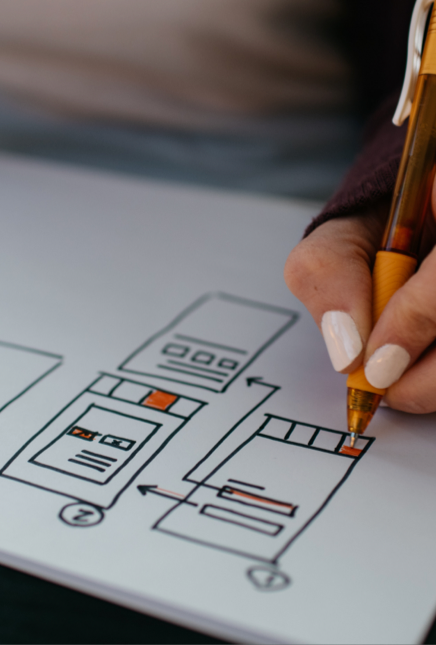
We designers are often in a position where we have to find new ways to be creative, whilst solving problems and (hopefully) keeping our spirits up. On top of this, many designers are often sandwiched between stiff corporate management and the need for speed and innovation. Oftentimes we are sucked into dynamics where we have to balance the imperatives of profit and purpose. We often see the tension between speed and quality, and too often we witness “the business” sacrificing quality, to get something out sooner. We are in an industry where collaboration and competition coexist and sometimes clash. So how do we contribute within our industry to higher ideals? As craft leaders, how do we advocate for quality? And what does high-quality design even mean? How can we influence as designers the decision-makers within our industry to create change? Is it our role? Can we actually do it?
With the environmental impact of the technologies we’re using today and the way we structure companies and our lives, we’re very quickly moving into a potential dystopia of less work, bigger wealth gaps, and a dying planet. As people who design solutions for a living, we need to not only educate ourselves on the problems and potential futures, but also on the ways we can start tiny revolutions and structural changes in the work we produce and in how we shape our environment.
Design Matters 23 will look into what it is like to be in the “trenches” of designing a product or a service. We will explore effective and new ways to be creative and find inspiration within ourselves and from unknown places. We will delve into the designers’ perspectives – as opposed to the managers’ ones – and examine how we can lead societal change through our craft – which involves a responsible approach, a lot of creativity, and hard nerdy skills.
Extra theme: Chill the F* out
Sometimes we forget that design CAN and SHOULD be fun. We will make sure you’ll get your dose of entertainment through a bunch of night performances (such as design stand-ups) and a series of interactive activities and crafty mini workshops located in the Craft Zone of the venue. Set your creativity free, make new friends, or simply chill the f out!
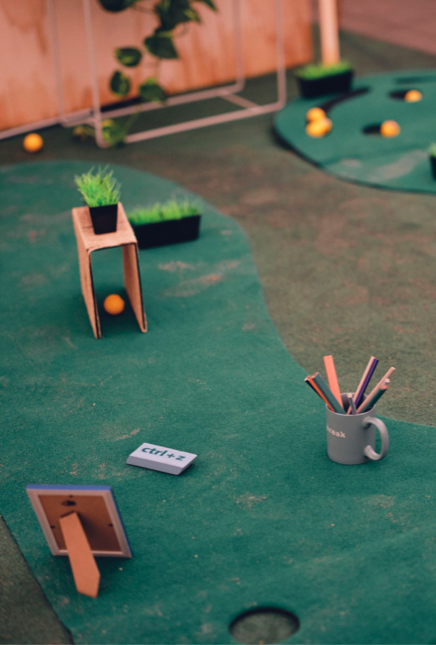
Get your ticket
The event will take place both online and in Copenhagen, on September 27-28, 2023.
If you join with your team you can get a Group Discount, and if you belong to a minority you can get a DEI Discount (we do not store personal information about the attendees). Read more about the discounts and get your ticket here.
